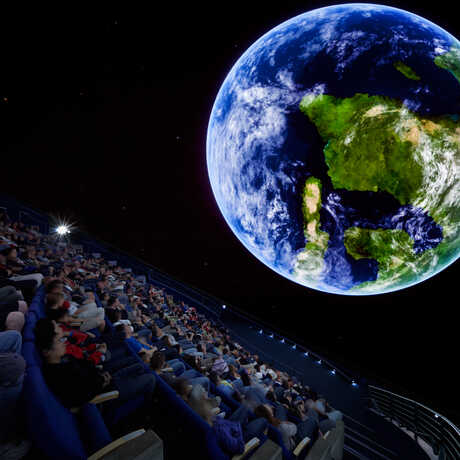From outer space to Earth's inner core, explore the universe from Morrison Planetarium's 75-foot digital dome.

Home to one of the world’s largest all-digital planetarium domes, the Academy is an incredible place to see stars on the big screen. For the real thing, however, few places compare to Chile.
In Big Astronomy: People, Places, Discoveries, journey to three world-class observatories in Chile’s rugged Andes Mountains and arid Atacama Desert—remote, extreme regions that happen to have the perfect conditions for astronomical research. Along the way, you’ll meet an inspiring cast of astronomers, engineers, technicians, and support staff who keep these mega-machines running.
Big Astronomy: People, Places, Discoveries is not currently playing at Morrison Planetarium.

We're seeing stars: Big Astronomy won the Best Science Film award at the Dome Fest West Film Festival on October 10, 2021.

There’s a reason Chile is home to about 70% of the world’s astronomy infrastructure: Dry, stable air and clear, dark night skies. These ideal atmospheric and meteorological conditions—plus the virtual absence of light pollution—enable Chilean observatories to view celestial bodies thousands of light-years away.

From keeping 4-meter mirrors spotless to interpreting terabytes of interstellar data, running the world’s largest observatories requires the coordinated efforts of hundreds of passionate, talented people with a constellation of diverse skills.

Big Astronomy’s observatories look into space in two different ways. Cerro Tololo Inter-American Observatory (CTIO) and Gemini South Observatory use optical telescopes to collect and magnify visible light with mirrors, while the Atacama Large Millimeter/submillimeter Array (ALMA) is a radio telescope comprising 66 networked antennae that collect radio waves emitted by distant astronomical objects.

Learning or teaching from home? Our Educator Guide brings Big Astronomy’s cosmic concepts back down to Earth. Get clear, concise explanations of key astronomy terms, and dig in to hands-on activities, extensions, and enrichment for students of all ages.
From outer space to Earth's inner core, explore the universe from Morrison Planetarium's 75-foot digital dome.

Big Astronomy is a collaboration between Abrams Planetarium at MSU, Associated Universities Inc. (AUI), Association of Universities for Research in Astronomy (AURA), Astronomical Society of the Pacific (ASP), California Academy of Sciences, Peoria Riverfront Museum, Ward Beecher Planetarium at YSU, Atacama Large Millimeter-submillimeter Array (ALMA), Vera C. Rubin Observatory construction project, NSF’s NOIRLab facilities Cerro Tololo Inter-American Observatory (CTIO) and the international Gemini Observatory. Big Astronomy is supported by the U.S. National Science Foundation (Award #: 1811436).